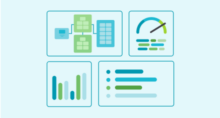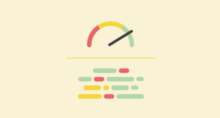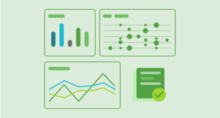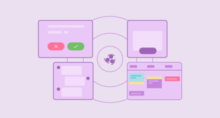Stakeholder Engagement Tools: What They Are and How to Choose One

A lot goes into a successful stakeholder engagement. You have to track your stakeholders, organize them into groups, engage with them, track all your communications and interactions, track your relationships, make sense of your data, manage your team, and then report on all of the above. It really is a lot!
In order to keep these processes moving forward (without undue stress!), you need a stakeholder engagement tool that will keep everything in one place. And hopefully streamline/automate wherever possible so that you can spend less time messing around with spreadsheets, and more time actually engaging your stakeholders.
This guide covers everything you should know about stakeholder engagement tools, including what they are (and aren’t!), why they’re so useful, how to choose one, and a shortlist of popular engagement tools.
What Are Stakeholder Engagement Tools?
Stakeholder engagement tools may include any software that is used to support an organization’s interactions with the people, groups, and organizations that are impacted by, have an influence on, or an interest in their project or work.
Types of Stakeholder Engagement Tools
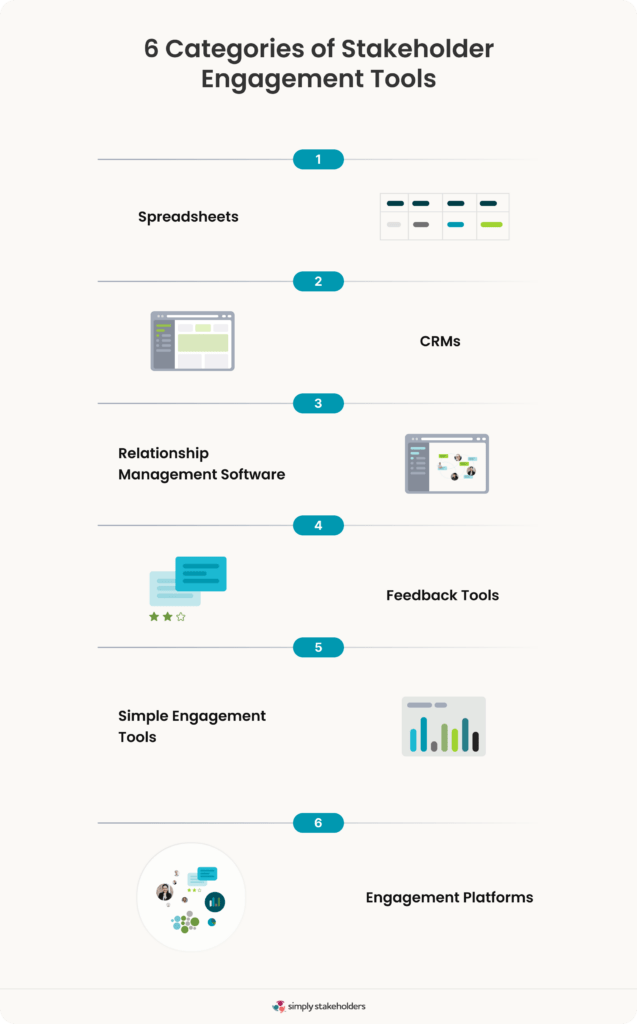
Within the stakeholder engagement tool category, you’ll find a variety of software types, each used for different purposes. You may also find that some organizations use generic tools that aren’t necessarily designed for stakeholder engagement. Here are some of the types of tools you may come across:
Spreadsheets
Many smaller organizations start with spreadsheets as their first tool for stakeholder engagement, using them as a stakeholder register to record stakeholder information and to make notes. However, most quickly run into issues, inefficiencies, and limitations, such as the lack of data analysis, clunky user experience, difficulty collaborating, and privacy/security issues.
CRMs
Many organizations also use customer relationship management systems (CRMs) to manage their stakeholders. But as these aren’t built for stakeholder engagement, they also lack important features — and may have extra features (to support sales and marketing) that make using them clunky and impractical.
Learn more about the differences between a CRM and stakeholder software.
Relationship Management Software
Some stakeholder tools are designed specifically for managing stakeholders and their relationships.
Stakeholder relationship management can be part of stakeholder engagement — but they are not the same thing and are not standalone processes. Stakeholder management involves planning, executing, and evaluating the process, while stakeholder engagement involves the actual activities you undertake with stakeholders. Plus, your processes for seeking their involvement, as set out in your stakeholder engagement plan.
As such, relationship management might form part of a stakeholder engagement tool, or be used in conjunction with other tools.
Feedback Tools
Some organizations may also use feedback software as part of their overall stakeholder engagement toolkit. Engagement Hub, Social PinPoint, and Engagement HQ are examples of this kind of stakeholder engagement software.
However, these are designed to manage online engagement, so they are only able to reach highly literate participants with the ability and access to engage via a digital platform. They exclude other means of engagement and communication, such as workshops, emails, and phone conversations, so organizations will usually need to use other stakeholder engagement tools, as well.
Simple Engagement Tools
Other tools may be designed to support part of an engagement strategy or help to improve your stakeholder experience. For example, Mentimeter is a handy tool for running quick polls during an event. And Feedback Frames can be used to prioritize options during a workshop.
Engagement Platforms
We would define an engagement platform as an advanced stakeholder engagement tool with the ability to bring all your information together (both online and offline), with a strong focus on analysis and making sense of the data. Unlike the other tool types mentioned above, it offers a big picture view of your engagement through a variety of built-in capabilities and external integrations. Examples of this include Simply Stakeholders, Darzin, Borealis, Consultation Manager, and Jambo.
This ⬆ is the type of software we’ll focus on — not only because it is the most comprehensive, but because it is what most people really want when searching for a stakeholder engagement tool.
Benefits of Stakeholder Engagement Software
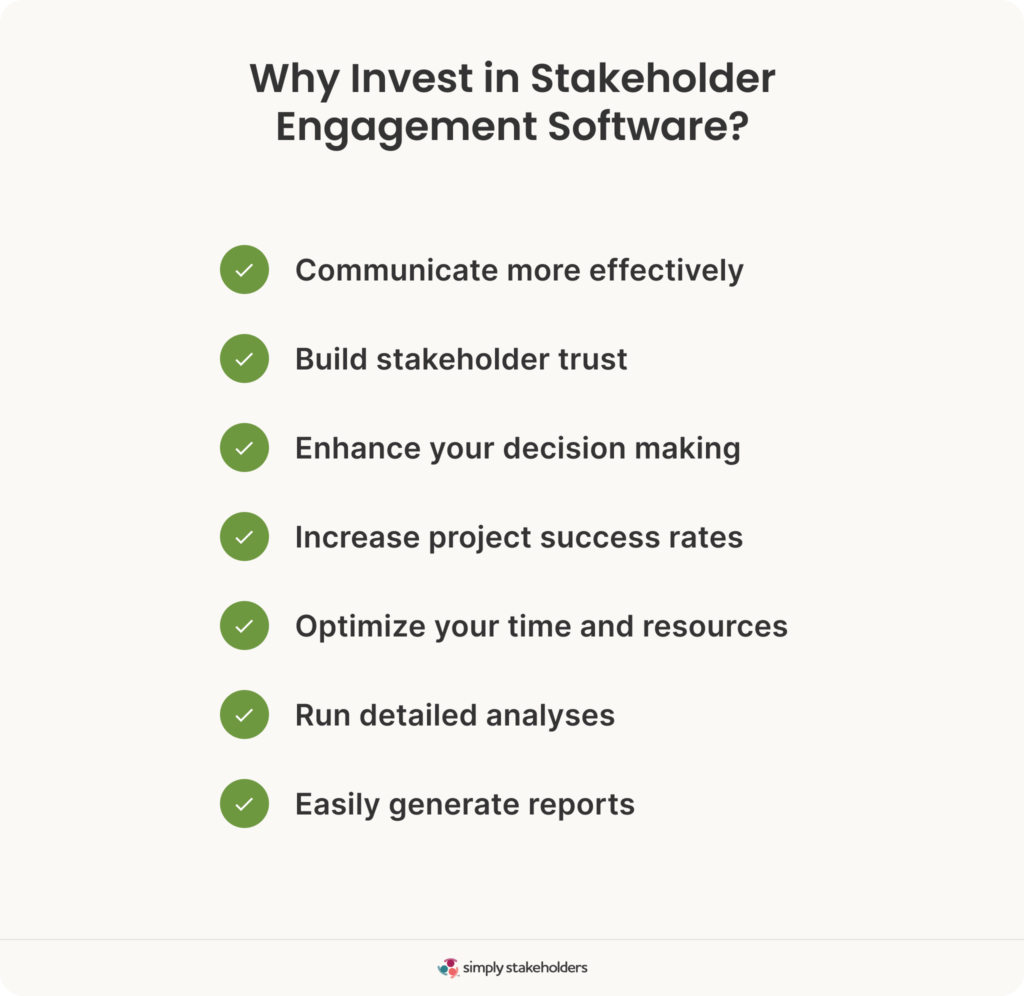
Why bother with proper stakeholder engagement software? You may be able to get away with tracking stakeholders using a combination of manual methods and basic, multi-purpose tools. But if you have a high-stakes engagement or high-risk project, the benefits of purpose-built stakeholder engagement software make it a worthwhile investment.
You could benefit from:
- Better Communication (and Trust) – The right software will make it easier to tailor your communication with the right message to the right person at the right time (which is absolute best practice in stakeholder engagement!), and more consistent communication will help you build trust with stakeholders.
- Enhanced Decision Making – Proper stakeholder software will help you boost participation and engagement from stakeholders, which will lead to more insights that help inform your decisions.
- Increased Project Success Rates – Increase the likelihood of project success through greater stakeholder trust, improved communication, more insights, and greater stakeholder support.
- Optimized Time and Resources – Run a more efficient engagement through streamlined data management, built-in tools, integrations, and automated processes.
- Enhanced Reporting and Analytics – Easily generated detailed reports and run up-to-date analyses with stakeholder engagement software that can handle large volumes of data and all the complexities of your engagement.
Many organizations will find that stakeholder software quickly delivers an ROI. And at the end of the day, the cost of stakeholder engagement software is relatively minimal when you consider the potential benefits and the hidden costs of not having stakeholder software!
How to Choose a Stakeholder Engagement Tool

When comparing the different stakeholder engagement tools on the market, here are some important considerations:
Long vs Short-Term
Is it a short term or one-off engagement, or do you need ongoing relationship building? With a shorter term engagement, you may be able to get away with a less sophisticated tool (e.g. a spreadsheet) and manual methods of analysis and tracking. But if you need to track stakeholders long-term, you can get more benefits and efficiency from investing in more powerful, comprehensive stakeholder engagement tools.
Reporting
What kind of reporting do you need to do? If you don’t need to do any formal reporting or demonstrate reporting transparency, you may be able to get away with using a spreadsheet. For more advanced reporting and accountability, or the need to report on larger volumes of data, you’ll likely require stakeholder engagement software.
Data Requirements
What kind of data do you need to record, track, and analyze? If you only need to track who your stakeholders are, a CRM might be ok. Or if you only need to record small amounts of data, a spreadsheet may work. However, for complex relationship tracking, interactions tracking, qualitative data analysis, and large volumes of data, you’ll likely need a stakeholder engagement platform.
Team Capabilities
Who is involved in the engagement? If only one person is managing the engagement, inputting data, and analyzing that data, you could get away with a more basic toolkit, especially if that person is tech-savvy and able to handle different manual processes. However, if more than one person is working on the engagement, you’ll likely need a stakeholder engagement tool that supports collaboration and data sharing, tracks ownership, and has built-in processes that everyone can follow.
Generally speaking, an advanced stakeholder engagement tool should tick all the above boxes — though different tools will have different strengths and weaknesses. But if your organization isn’t yet ready to commit to an advanced tool, it’s a short-term engagement, you don’t need team capabilities, and your reporting and data requirements are minimal, you may be able to get away with a combination of simpler tools, spreadsheets, and manual processes (at least for a time).
For more info on stakeholder software selection, check out these 10 tips for success with stakeholder software.
Top 8 Stakeholder Engagement Tools
Ready to start exploring the different stakeholder engagement tools on the market? Below you’ll find 8 of the most popular products currently available, their main features, and what types of tasks or projects they’re ideal for.
1. Simply Stakeholders
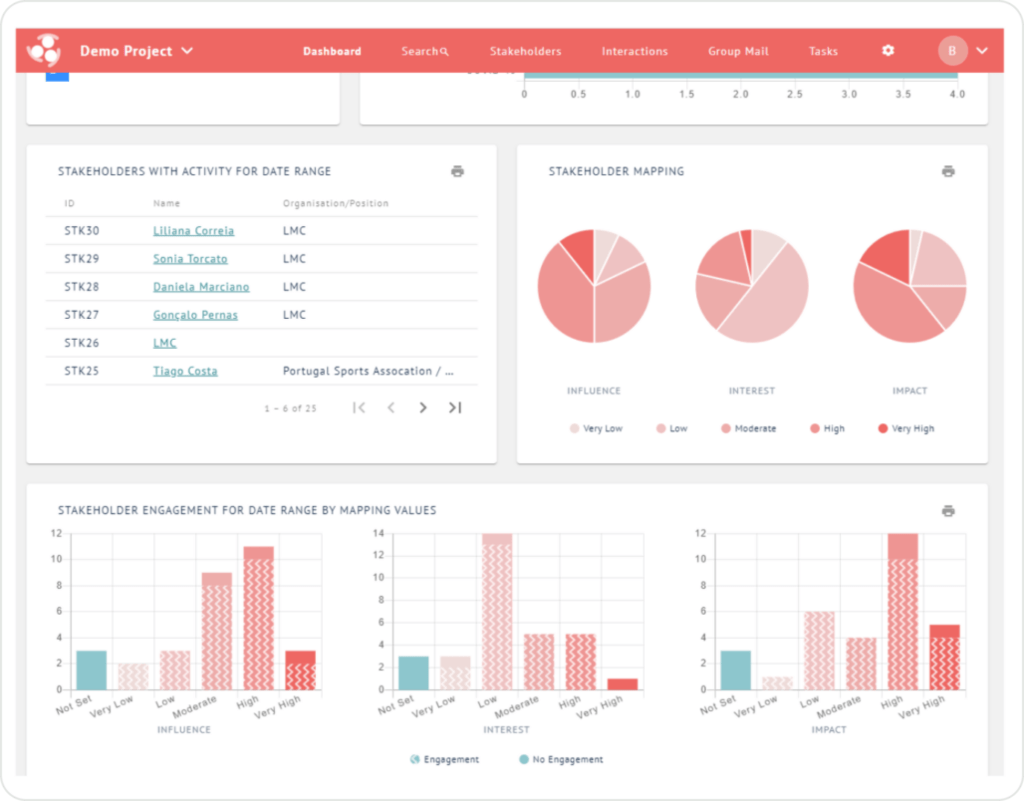
G2 Rating: 5 out of 5 stars
Best for: Any organizations (small or large) that want access to a comprehensive suite of stakeholder engagement tools, inside a modern, user-friendly platform.
Since launching in 2018, Simply Stakeholders has quickly grown to become one of the most popular stakeholder tools, known for its uniquely feature-rich platform that’s easy for users to learn and use. Simply Stakeholders helps users get the most value and best results from their relationship building efforts thanks to its highly strategic built-in stakeholder analysis methodology. The software is exclusively available as a web-based app and its integrations include Gmail, Outlook, Excel, and Zapier.
Key features:
- Stakeholder Register Management: Add stakeholder information, contact details, and interactions — or import from a spreadsheet/integration
- Stakeholder Mapping: Map stakeholders based on six different dimensions/characteristics, relationships, and/or geographic locations
- Smart Tagging: Automatically tag stakeholders and interactions using AI, tracking sentiment across multiple areas
- Stakeholder Analysis & Reporting: Analyze quantitative and qualitative stakeholder data, and easily generate and share reports
- Stakeholder Management: Manage tasks and grievances and track your commitments
- Collaboration: Manage user roles, permissions, access, and ownership
2. Darzin
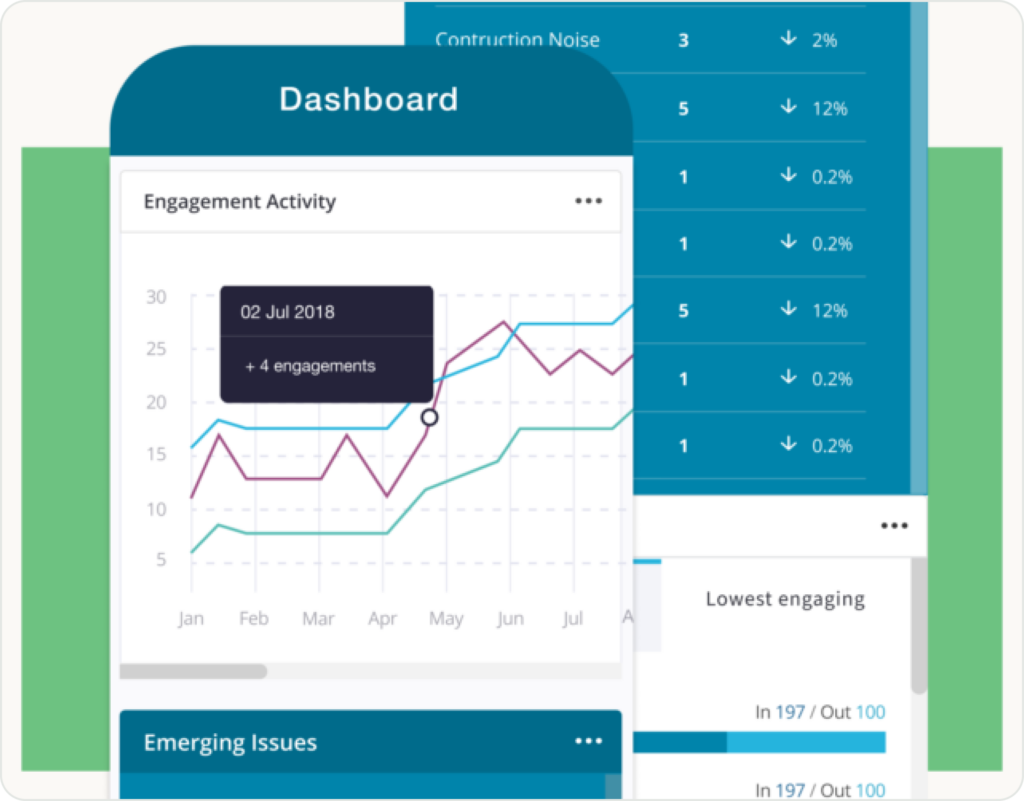
G2 Rating: 5 out of 5 stars
Best for: Darzin is built by the same team behind Simply Stakeholders, but with features and plans designed for bigger enterprizes and more complex engagements, such as those in government, health, energy, and infrastructure.
Founded in 2004 by a Sydney-based team of stakeholder experts, Darzin has been a pioneer tool in the stakeholder engagement space. Known as the world’s most powerful stakeholder engagement platform, Darzin really delivers with rich features and flexibility that are built for complexity. Configuration options include a web-based app, on-premises install, or iPhone/Android apps. A free trial and customized pricing options are available.
Key features:
- Stakeholder Mapping: Segment stakeholders based on influence, interest, and impact — and see where people/issues are located on a map
- Stakeholder Tracking: Track stakeholder relationships, online interactions, face-to-face interactions, tasks, grievances, and history — including custom fields to track any information you choose
- Surveys: Create and publish surveys (and other forms), and automatically match responses to existing stakeholders
- Communication: Automatically save emails to the appropriate contact via the Outlook/Gmail plugins
- Analysis: Gain insights into stakeholder views on traditional media or social media via integrations, and analyze text-rich responses to understand sentiment (using AI) and issues
- Reporting: Generate reports across your organization or for an individual project, choose from 80+ built-in reports, and use filters to discover specific insights
- Project Management & Collaboration: Get a snapshot via the dashboard, manage multiple projects, tailor data for different teams, and use the shared team calendar to coordinate events/meetings
3. Borealis
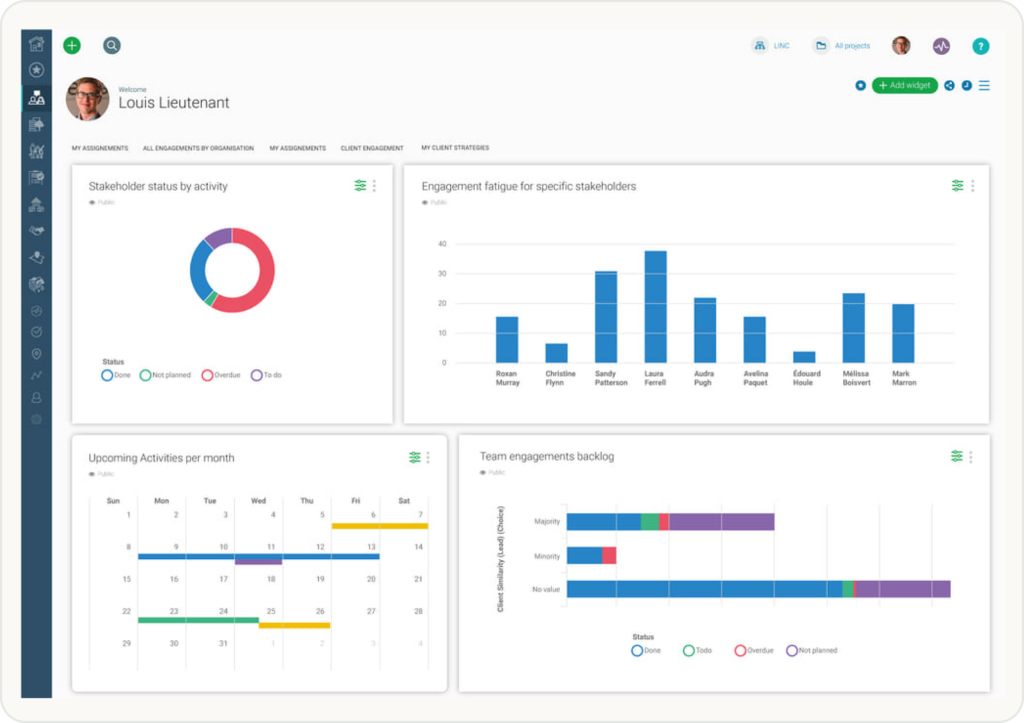
G2 Rating: 4 out of 5 stars
Best for: Highly regulated industries that have an environmental monitoring overlay and require multi-layered software to manage their complex engagements.
Borealis offers cloud-based stakeholder engagement software to store, share, and report on stakeholder data and activities. Their users typically have a strong focus on acquiring social acceptance, demonstrating SR, managing government relations, tracking land access/management, or tracking sustainability.
Key features:
- Planning & Management: Stakeholder mapping, geo-referenced data, dashboards, calendars, calculated relationships, mobile app, business card scanning, grievance & feedback portal, local employment & procurement, land agreements
- Communication: Distribution lists, list of US-elected officials, email integration, SMS messaging, central address book, communication tracking
- Analysis & reporting: Audit & activity trail, data analysis, graphs, scheduled reports
- Collaboration: Project management tools, task management, corporate data view, role delegation, custom user profiles, data access restriction
Learn more in our blog: 6 Top Borealis Competitors and Alternatives
4. Consultation Manager
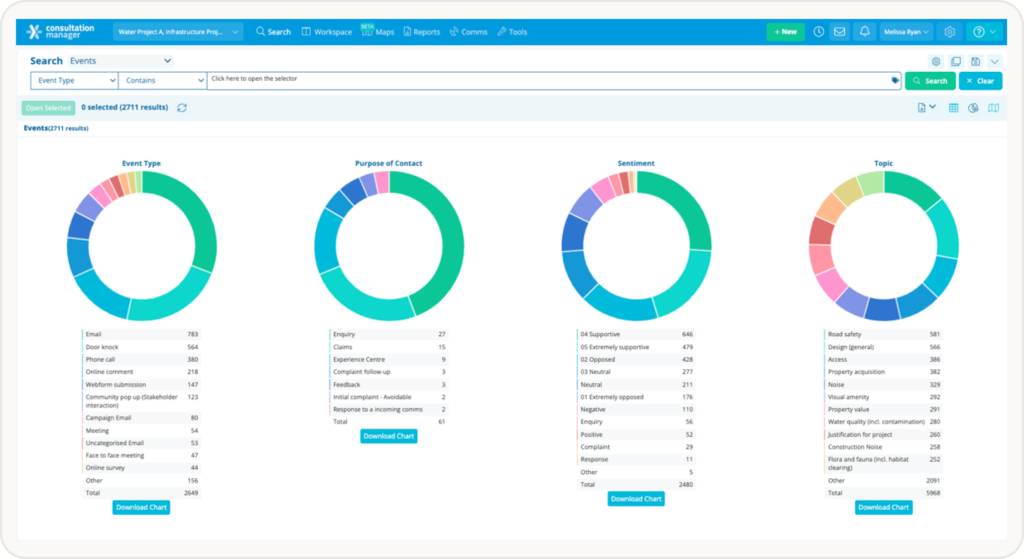
G2 Rating: not yet rated
Best for: Keeping records for infrastructure projects that don’t require detailed analyses, stakeholder mapping, or reporting capabilities.
Consultation Manager is a relationship management tool designed to capture stakeholder data, generate reports, and support relationship building activities and communications. Their main focus is on supporting consultation for construction, infrastructure, renewables, resources, and government.
Key features:
- Data capture: Import data, save emails, capture web forms, track changes, use custom fields, link records,
- Tracking: Track engagements, agreements, commitments, themes, sentiment
- Analysis & Reporting: Built-in reports, custom reports, stakeholder maps, communication analysis, search, live dashboard, visualizations
- Communication: SMS tool, email tool, complaints management, feedback forms
- Collaboration & Management: Manage users & permissions, notification, tasks, workflows
5. Thryv
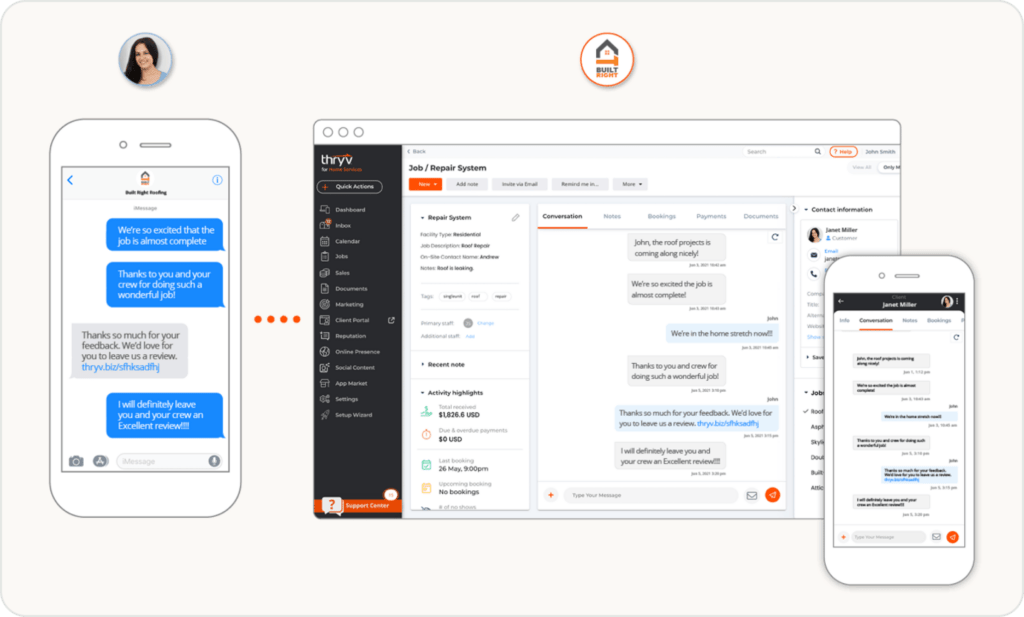
G2 Rating: 5 out of 5 stars
Best for: Organizations that mainly need to manage customer relationships, marketing, and communication, as well as brand reputation.
Thryv offers a number of relationship management features, but its core focus as a CRM is on managing customer relationships as part of the sales and marketing process. This means that although some of its users may use it as part of their stakeholder engagement process, it lacks stakeholder-specific functionality.
Key features:
- Communications Management: Centralized inbox, team chat, phone calls, video calls
- Business Management: CRM, appointment booking, invoicing, document storage, digital payments, client portal
- Marketing: Social media management, online listings, reviews, email marketing, SMS marketing, campaigns, landing pages, analytics
6. Jambo
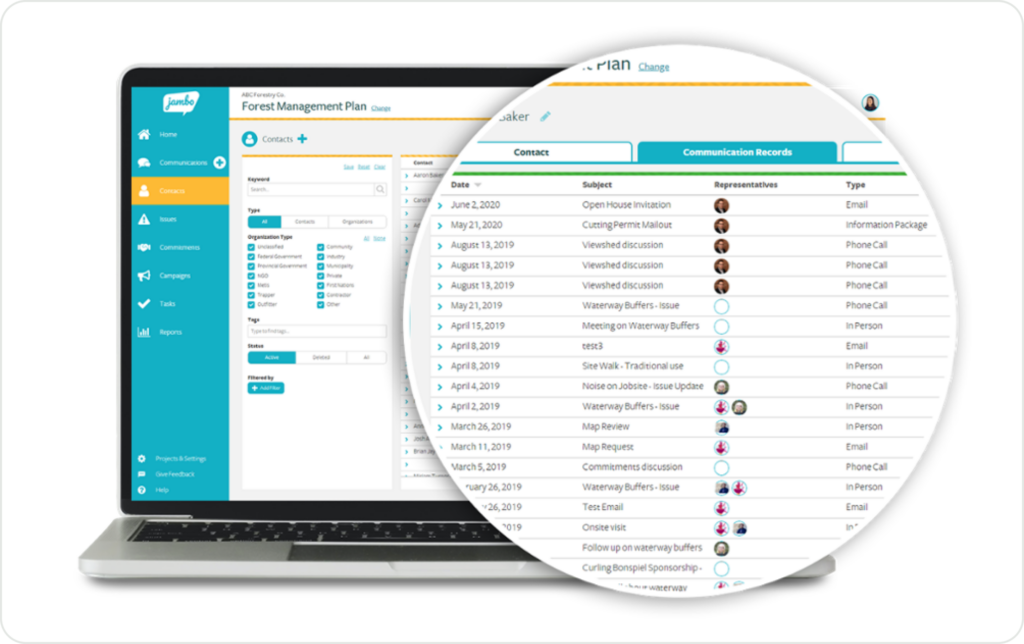
G2 Rating: 5 out of 5 stars
Best for: Government clients or organizations with a focus on indigenous or community relations, that don’t require complex data management, analysis, or reporting.
Jambo is designed to record and manage the information that comes out of the stakeholder consultation process, including stakeholder contact details, communication, and interactions.
Key features:
- Contact Records: Stakeholder profiles, contact information
- Communication: Communication tracking, interactions, list exports, email integration
- Team Management: User permissions, confidentiality, change history
- Tracking: Track issues, commitments, and tasks
- Reporting: Summarized or detailed progress reports
7. Totango
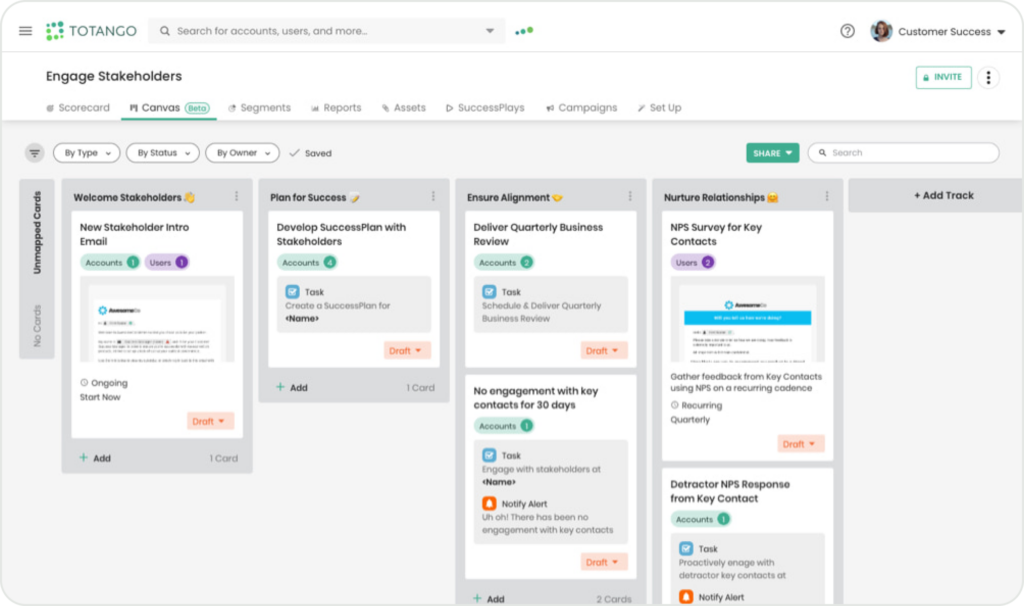
G2 Rating: 5 out of 5 stars
Best for: Simple engagements, planning, and tracking engagement metrics within a CRM.
Totango isn’t exactly a stakeholder engagement tool, but more of a customer success tool. However, they do offer a ‘Stakeholder Engagement SuccessBLOC’ (like a built-in template within the app) that is designed to help with managing and improving stakeholder relationships and outcomes. And like other CRMs, it could be adapted to support some of the stakeholder engagement process, such as managing contacts, communications, tracking interactions, and task management.
Key features
- Planning: Develop a mutually agreed upon success plan, track KPIs, deliver quarterly reviews
- Tracking: Track how you’re engaging with stakeholders and key contacts, and proactively engage when stakeholders drop away or present greater risk
- Segmentation: Use filters to target and analyze specific groups
- Campaigns: Automatically trigger tasks and actions based on stakeholder engagement, automatically send emails triggered by goals
8. Monday.com
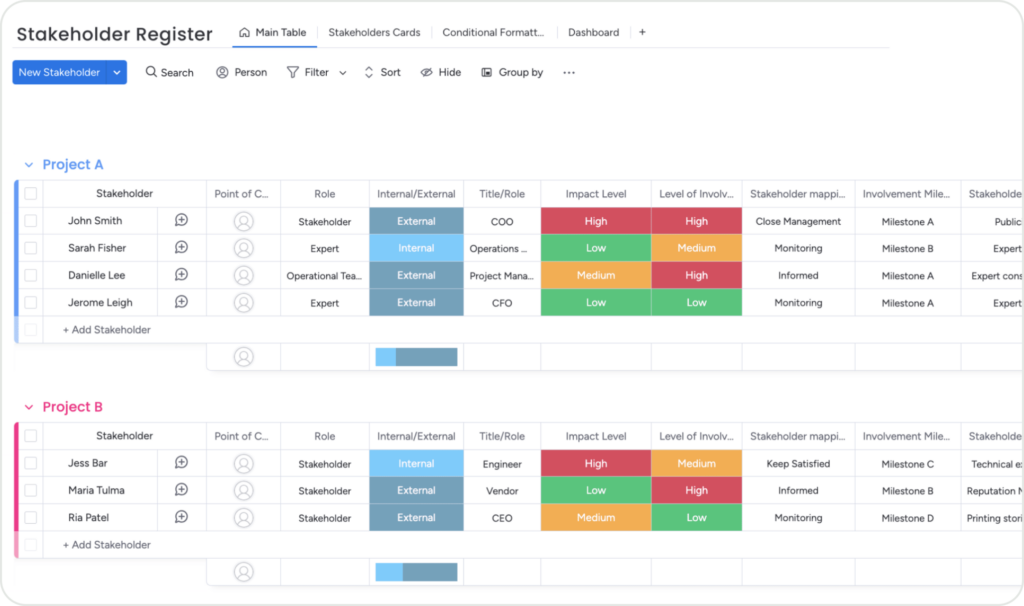
G2 Rating: 5 out of 5 stars
Best for: Taking a project management approach to stakeholder engagement, without the need for built-in analysis, mapping, reporting, relationship management, and tracking features.
Monday is a popular project management tool, but due to its flexibility, some organizations may use it to support their stakeholder engagement process.
Key features:
- Stakeholder Register: Similar to a spreadsheet, stakeholder details can be added, along with any relevant data and notes
- Matrix Templates: It may be possible to complete a simple analysis/mapping/plan by using the platform’s RACI matrix template or Eisenhower matrix template
- Visualizations: Visualize data in graphs via custom dashboards
- Project & Task Management: Manage projects, assign tasks, and manage resources
Enhance Your Stakeholder Engagement With Simply Stakeholders
Every mature organization, high-stakes engagement, or high-risk project should have stakeholder engagement software with the right capabilities for reporting, compliance, data analysis, and team management.
Exploring new solutions to help enhance your stakeholder engagement? Learn more about our platform or reach out to our team to book a demo. We’d love to personally take you through the platform and tools, from stakeholder analysis and mapping to our integrations and reporting capabilities.

